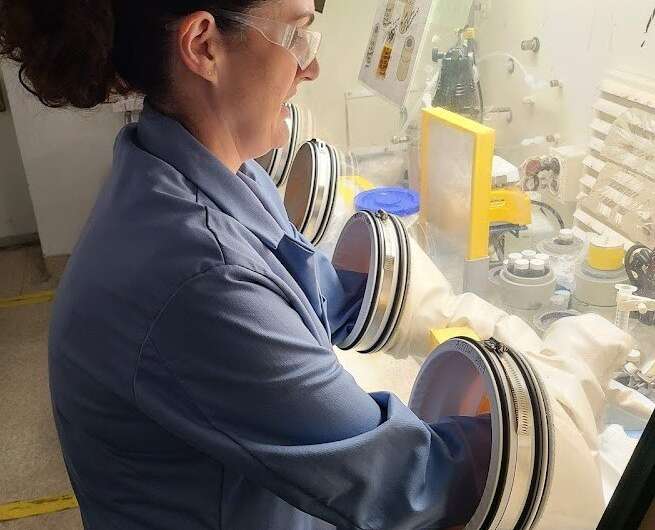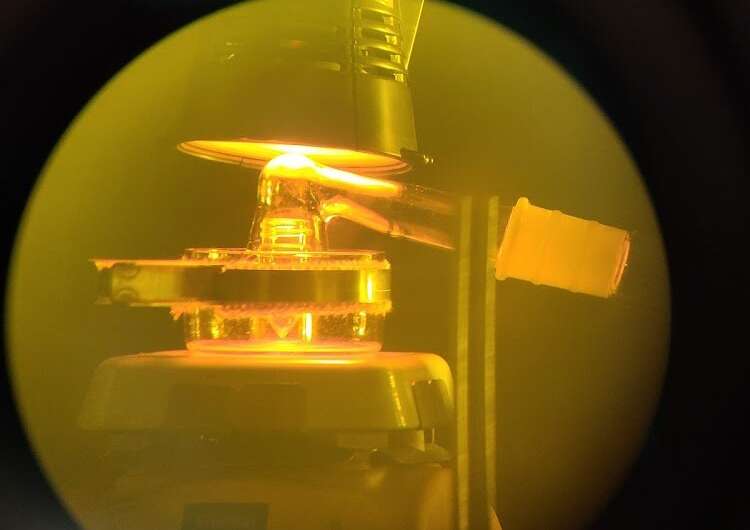
As a medical isotope, thorium-228 has a lot of potential—and Oak Ridge National Laboratory produces a lot.
That’s one reason ORNL researchers are especially excited about studies looking at different medical applications for the radioisotope. ORNL produces large quantities of Th-228 for the Department of Energy’s Isotope Program as a byproduct of actinium-227 production.
Both Ac-227 and Th-228 are created when ORNL irradiates radium-226 in the High Flux Isotope Reactor. Maximizing the production of Ac-227, used in cancer treatments, is the goal, but the process also produces a significant amount of Th-228.
Th-228 is used to make radium-224/lead-212 generators. These generators allow the radium-224 extracted from Th-228 to decay over time and produce lead-212 and bismuth-212 for research on targeted alpha therapy, attacking metastatic skin cancers and neuroendocrine tumors with minimal damage to surrounding tissue.
Right now, DOE’s Isotope Program, through the National Isotope Development Center (NIDC), sells these lead-212 generators to research laboratories and hospitals.
“We do expect the demand to increase,” said ORNL chemist Roy Copping.

As a byproduct of Ac-227, purification of Th-228 for medical applications is a relatively simple process, requiring only one chemical separation.
Ultimately, finding more uses for the radioisotope, which has a half-life of 1.9 years, would reduce the need to dispose of Th-228 as waste.
There’s been progress on that lately. Earlier this year, NIDC entered into an agreement with a company to supply Th-228 for its radium-224 generator.
Another company is developing a thorium-based generator to be used for radiotherapy of soft tissue disease, while an additional company is developing a portfolio of targeted cancer therapies by combining lead-212—from Th-228—with various other biological molecules.
In Norwegian clinical trials, radium-224—from Th-228 —shows promise when injected into ovarian cancer patients who do not respond to chemotherapy.
Other U.S. and European clinical trials are testing its efficacy in treating breast, ovarian, bone and prostate cancers.
“With the available infrastructure and radiochemistry expertise, ORNL has the capacity and ability to provide Th-228 at the quality required for these medical applications,” said ORNL project manager Dan Stracener.
Citation:
Thorium-228 supply ripe for research into medical applications (2021, August 27)
retrieved 27 August 2021
from https://phys.org/news/2021-08-thorium-ripe-medical-applications.html
This document is subject to copyright. Apart from any fair dealing for the purpose of private study or research, no
part may be reproduced without the written permission. The content is provided for information purposes only.
- Home
- Content Marketing
- Digital Marketing Strategy
- Landing page
- News
- PPC
- SEO
- Social media
- WordPress web development


